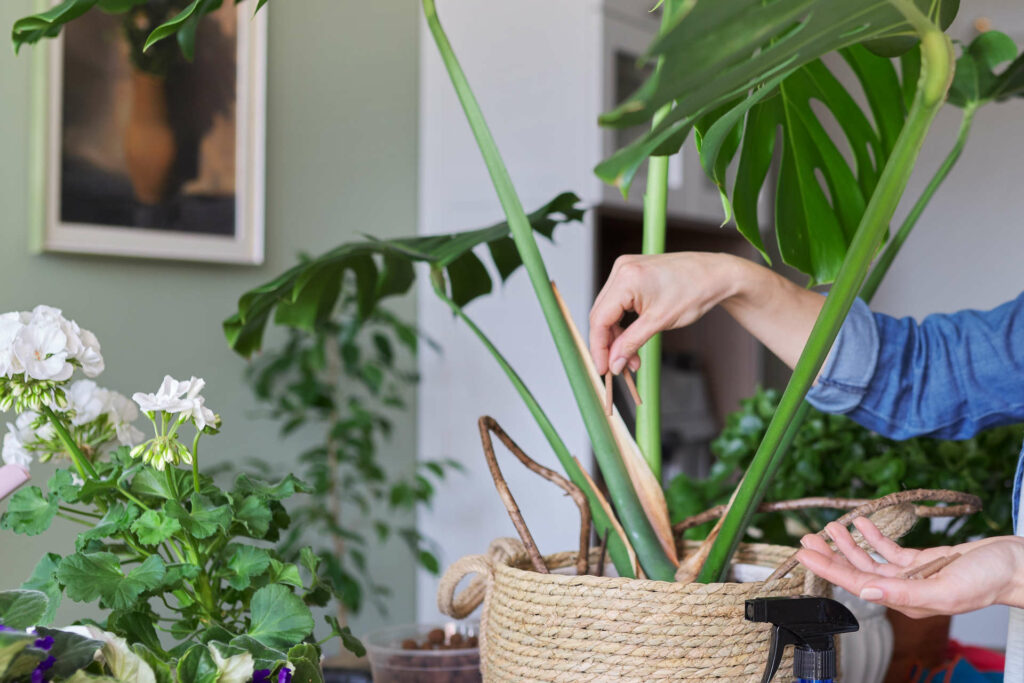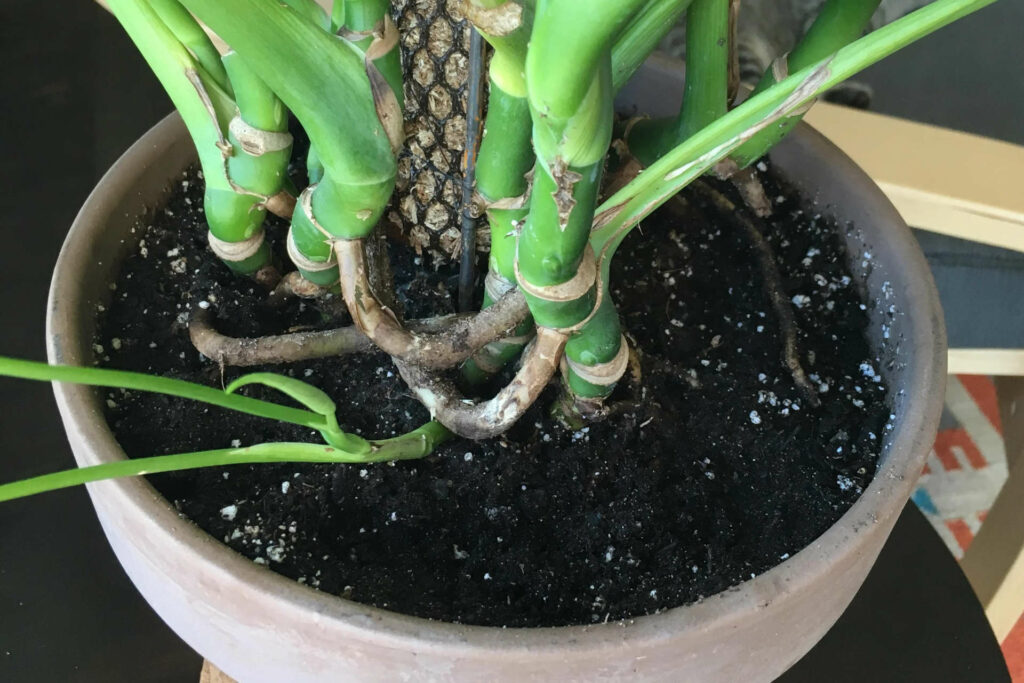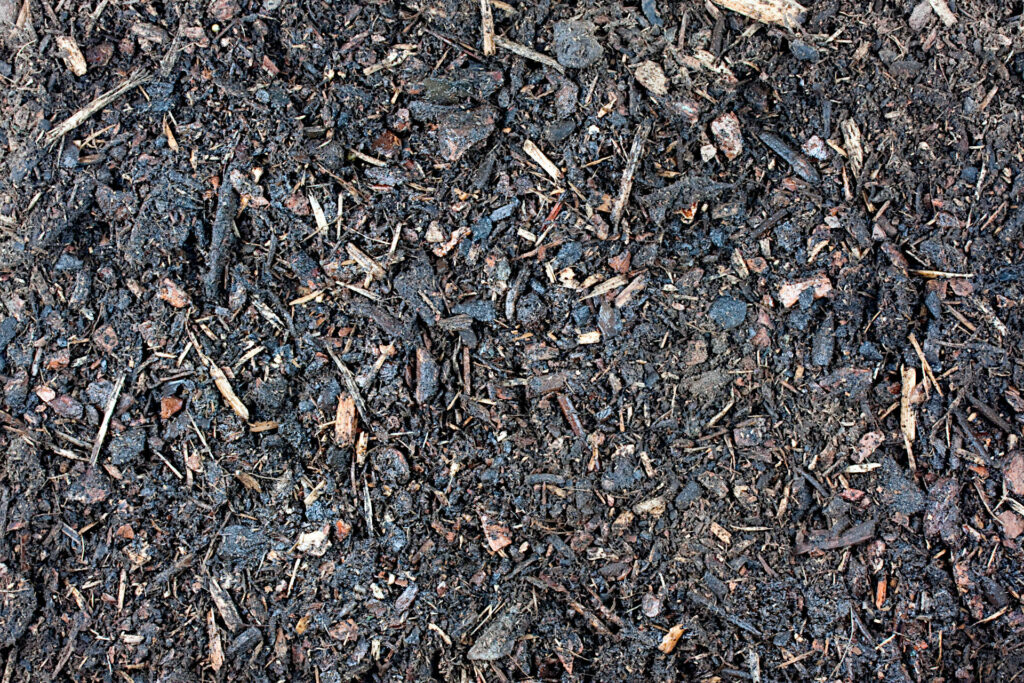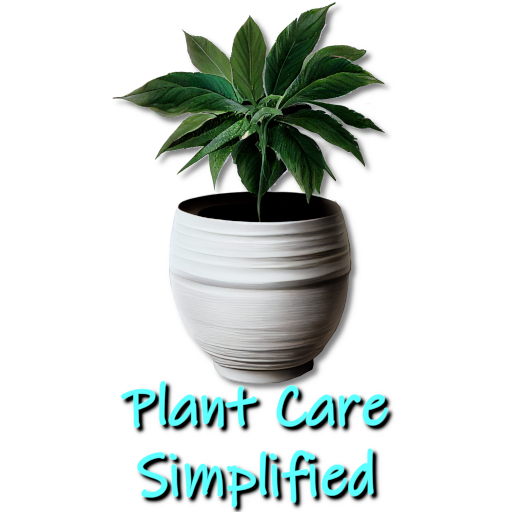What type of soil or potting mix is best for a Monstera plant?
Kim is passionate about helping people create beautiful, healthy indoor spaces that are filled with plants. Kim believes that plants make us happier, healthier human...
Monstera plants are stunning indoor houseplants that have become popular for their unique split leaves. These plants are relatively easy to care for, but it is crucial to understand the right type of soil to use to keep them healthy and thriving.
The soil is the foundation for healthy root growth, providing moisture, drainage, and essential nutrients. Without the proper soil, a Monstera plant may become waterlogged and suffer from root rot or dry out too quickly.
The objective of this article is to examine the characteristics of the best soil for Monstera plants, why the right soil matters, and how to ensure the health of your Monstera through proper soil selection and care.
Why the Right Soil/Potting Mix Matters

Having a healthy soil environment is critical for the growth of your Monstera plant. Our first task is to delve into why the right soil matters and the key factors to consider to ensure your plant has the foundation it needs to thrive. From retaining moisture and providing necessary nutrients to avoiding waterlogging and root rot, and preventing soil from drying out quickly, the right soil can make all the difference for your Monstera.
Foundation for Healthy Root Growth
The right soil for your Monstera plant is more than just a medium for it to grow in; it's the foundation for healthy root growth. The soil is responsible for providing the necessary conditions to allow your plant to grow strong and healthy roots, supporting the rest of the plant.
Retains Moisture and Provides Necessary Nutrients
In addition to providing the foundation for healthy root growth, the right soil for Monstera plants also holds enough moisture and provides the necessary nutrients for healthy growth. Monstera plants require a well-balanced soil mixture that retains moisture without becoming waterlogged, and provides the necessary nutrients for healthy growth.
Avoiding Waterlogging and Root Rot
Using the wrong type of soil can have disastrous consequences for your Monstera plant. If the soil is too dense, it can lead to waterlogging and root rot, which can be fatal for your plant. Waterlogging occurs when the soil holds too much water and doesn't allow the roots to breathe, leading to root rot and a slow death for your plant.
Preventing Soil from Drying Out Quickly
Using too sandy soil can also cause problems for your Monstera plant. Too sandy soil can cause the plant to dry out quickly, leading to a lack of moisture and potentially stunted growth. Using a well-draining, peat-based soil mixture that retains moisture without becoming waterlogged and provides the necessary nutrients for healthy growth is important.
The Best Soil for Monstera Plants
A strong foundation for your Monstera plant's roots is crucial for its health and survival. But what exactly makes a good soil mix for these tropical beauties? A well-draining, peat-based soil mixture is the best option for Monstera plants, but you can also opt for a commercial potting mix for indoor plants. To enhance the soil's ability to retain moisture and provide necessary nutrients, you can amend the mix with perlite, coconut coir, or sand.
In this section, we'll explore some specific soil brands and products recommended for Monstera plants and explain the significance of soil aeration in maintaining a healthy environment for your plant's roots.
Well-Draining, Peat-Based Soil/Potting Mixture
Monstera plants thrive in well-draining soil that is rich in organic matter. A good starting point is a peat-based soil mix that is formulated for indoor plants. Peat helps retain moisture while allowing excess water to drain away, preventing waterlogging and root rot.
Commercial Potting Mix for Indoor Plants
Many gardeners recommend using a commercial potting mix specifically formulated for indoor plants. These mixes contain a blend of peat, perlite, and other organic matter, and are designed to provide the right balance of moisture, nutrients, and aeration for healthy root growth.
Amending the Mix with Perlite, Coconut Coir, or Sand
You can amend your soil mix with perlite, coconut coir, or sand to improve drainage if you prefer. The added material will help to prevent the soil from becoming too compact and will increase the air spaces in the soil, improving soil aeration and promoting healthy root growth.
Recommendations for Specific Soil Brands/Products
Some gardeners swear by specific soil brands or products. We find that mixing half sphagnum peat moss and half perlite or, alternatively, a blend of peat, coco coir, and sand provides the best foundation for Monstera plants.
Irrespective of the mix you go with, be sure to look for one that is formulated specifically for indoor plants, and be sure to follow the manufacturer's recommendations for watering and fertilizing.
Soil Aeration and Its Importance
Soil aeration refers to the amount of air in the soil. Good soil aeration is essential for healthy root growth, allowing the roots to breathe and access the necessary oxygen. Soils that are too compact or have poor drainage can become waterlogged and suffocate the roots, leading to root rot and other problems.
To ensure that your Monstera plant has access to the necessary oxygen, it is essential to use a soil mix that is well-draining and aerated, and to avoid over-watering or using soil that becomes compact over time.
The Right Soil pH for Monstera Plants

It is crucial to provide the correct soil environment for Monstera plants, including pH. The ideal soil pH for Monstera plants is slightly acidic, ranging between 6.0-6.5. This pH range ensures that the plant can effectively absorb all the necessary nutrients from the soil.
Checking Soil pH
To ensure your Monstera plant is getting the ideal soil conditions, check the soil pH level regularly. Several testing methods are available, including soil test kits or pH meters. This will give you an accurate reading of the soil pH, and you can make necessary adjustments if required.
Adjusting Soil pH
In case the soil pH is not in the right range, you can adjust it by adding sulfur or lime to the soil. Sulfur will lower the soil pH, while lime will increase it. Be mindful not to add too much at once, as this can harm the plant. It is best to make small, gradual adjustments and retest the soil pH regularly until you reach the desired level.
Maintaining Appropriate Soil pH
Maintaining the correct soil pH is crucial for the health and growth of your Monstera plant. A soil pH that is too high or low can prevent the plant from absorbing the necessary nutrients, leading to stunted growth and other issues. Regularly monitoring and adjusting the soil pH will ensure that your Monstera plant receives the ideal soil environment to thrive.
Composting for Your Monstera

If you are using a loam soil mix maintaining a healthy soil environment for your Monstera plant is crucial for its growth and success. One way to ensure that the soil remains fertile and rich in nutrients is to add compost. Composting is an excellent method for enhancing the quality of the soil, promoting healthy growth, and encouraging the plant's root system to thrive.
Benefits of Adding Compost to Soil
Adding compost to the soil provides various benefits, including increased soil fertility, improved soil structure, and better moisture retention. These benefits promote healthier growth for your Monstera, ensuring it remains lush and vibrant for years to come.
Improving Soil Structure and Promoting Healthy Growth
Compost contains a mixture of decomposed organic matter, including dead leaves, grass clippings, and other natural materials. When added to the soil, compost improves its structure, helping it to retain moisture and nutrients while promoting healthy root growth.
How to Add Compost to the Top of the Soil in the Pot
To add compost to your Monstera's soil, spread a 2-3 inch layer of compost on top of the soil in the pot. Make sure to spread it evenly, covering the entire surface of the soil.
Importance of Watering
After adding compost to the soil, it's essential to water it in. This will help the compost mix with the soil, providing the plant's roots with access to its valuable nutrients. Watering will also help prevent the compost from drying out, ensuring it remains active and effective.
Watering Your Monstera
- Regular watering is crucial for Monstera plant health
- Factors affecting watering frequency (light, temperature, humidity)
- Checking soil moisture before watering
- The "soak and dry" method
- Watering from the bottom or top
- Using distilled water or letting tap water sit for 24 hours
- Signs of over- and under-watering
- Tips for maintaining a consistent watering schedule
A well-watered Monstera is a healthy Monstera. Regular watering is key to keeping your plant strong and thriving. However, the watering frequency will depend on various factors such as light, temperature, and humidity levels in your home. Before watering your Monstera, it is important to check the soil moisture level.
A good practice is the "soak and dry" method, which involves watering the plant thoroughly until the excess water drains out, then allowing the soil to dry before the next watering. Watering can be done from the bottom or top of the pot, but distilled water or tap water that has been left to sit for 24 hours is recommended.
It is important to be aware of the signs of over- and under-watering, as both can be detrimental to your plant's health. A consistent watering schedule will help keep your Monstera hydrated and healthy. If you want a more detailed look at the best watering practices for your Monstera, check out our detailed guide.
How Different Growing Mediums Affect the Likelihood of Common Pests and Diseases
Now that we have covered the essential elements for providing a healthy environment for your Monstera, it's time to discuss soil and growing mediums' impact on the likelihood of pests and diseases.
How different soils and growing mediums affect the likelihood of Common Pests and Diseases
- Heavy, poorly-draining soil can attract and foster pests and diseases
- Organic matter in soil can harbor pathogens that infect plants
- Well-draining soil with appropriate pH can prevent most pests and diseases
Choosing a soil that provides proper drainage and has the appropriate pH to reduce the risk of pests and diseases is essential. Heavy soil that retains too much moisture creates an environment that attracts and fosters pests and diseases. Additionally, organic matter in soil can sometimes harbor pathogens that infect plants. On the other hand, well-draining soil with the appropriate pH can help prevent most pests and diseases.
Coir and Vermiculite: Preventing Pests and Diseases
Monstera plants can be susceptible to pests such as spider mites, mealybugs, and scale insects, as well as diseases like root rot and stem rot. However, using the right growing medium can help reduce the likelihood of these issues.
Coir and vermiculite are two materials that are commonly added to soil to improve its structure and drainage.
- Coir is made from coconut husks and is an excellent alternative to peat moss as it is more sustainable and provides similar benefits to soil.
- Vermiculite is a type of mica that is naturally porous and helps retain moisture while allowing excess water to drain away.
By adding coir or vermiculite to soil, growers can reduce the risk of root rot caused by over-watering or poor drainage. Additionally, these materials can help create a drier environment for the plant, reducing the likelihood of fungal diseases that thrive in moist conditions.
It is important to note that using the right amount of these materials is crucial. Too much can make soil too dry, while too little may not provide enough protection against pests and diseases. Experimentation and observation are key to finding the perfect balance for your Monstera.
Kim is passionate about helping people create beautiful, healthy indoor spaces that are filled with plants. Kim believes that plants make us happier, healthier human beings, and she loves sharing her knowledge with others so they can experience the joys of plant care for themselves. <a href="https://plantcaresimplified.com/kim-marson/">Read more</a>
More Posts